Featured Articles
Subscribe to Our Newsletter
Receive exclusive updates and insights directly in your inbox.
Receive exclusive updates and insights directly in your inbox.
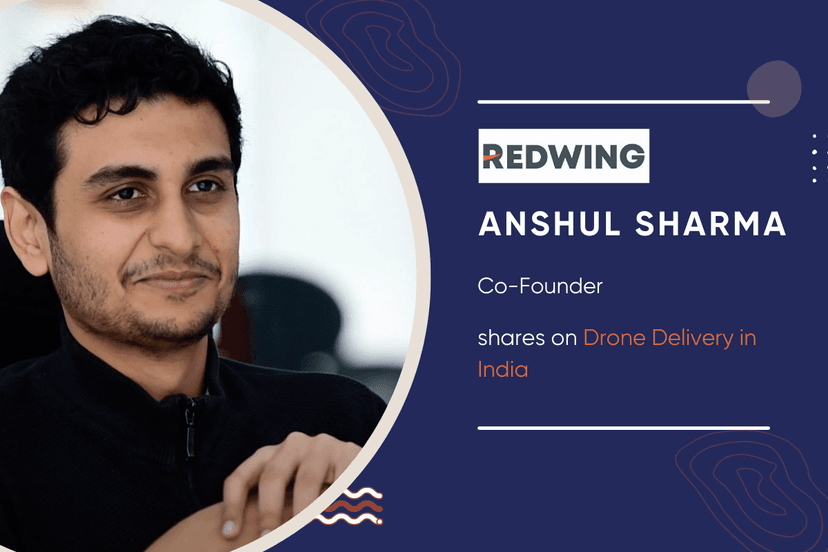
<p>Anshul Shares:<p>Realistically I would put HealthTech drone delivery between two to three years timeline in Bangalore and the reason for that is, this is something from the aviation standpoint, is to do with the return on risk basically. Bangalore has a very high urban airspace, meaning there are a lot of flights. I’m not sure how many flights exactly go from their capital airport, but the numbers are in higher parts somewhere else with Delhi similar to Mumbai as it is with Chennai and so on. Now, the reason why these types of cities can’t be the first ones to have drone delivery and why a rural area basically is being the first one is because since the volume of traffic is higher in these urban airspaces the risk profile is higher basically there is a quantitative risk method or risk assessed assessment method to determine a risk score lets say out of zero to ten that you can give of enabling drone delivery for the first time in a city like Bangalore versus and enabling drone delivery in a rural town of the northeast or any other states basically even in Karnataka as well.</p><p>67% of the population of India anyways lives in rural areas basically that’s one part and the second part is that when these sort of technologies are being built, simultaneously state partner, health partner or any sort of partnership essentially it’s really important to do it in a sort of an isolated environment. First let it work outlet all the kinks essentially work out and then start to slowly grow from there, hence the model how drone delivery has progressed throughout the world is that it has started first in the semi-rural arms and rural regions slowly reaching the remote, these are the first areas geographically which have adopted drone delivery and then it started to grow from the periphery into now the into the dense part, but I think it's the longer timeline to reach main major cities like New York or Bangalore or Delhi or anything similar will take significant time and at the same time, I doubt what exactly would be the exact use case over here. Drone delivery makes sense in a larger area whereas Bangalore population-wise or an urban city population-wise is quite higher but the geographical spread is quite dense. I think that will take a few kinks to work out. Definitely, we will see certain pilot projects happening within the next two years timeline but on a wide-scale regular adoption, I definitely do believe that given the precedence of how it has happened for the rest of the world that the rural, semi-urban open regions will be the first ones to get it followed by others. </p><h3><strong>Authored by Pratheek. V</strong></h3><p>For more information, please reach out to the <a href="Marketing@purplequarter.com">Marketing Team.</a></p><p>To find out more, watch the entire podcast here:</p><p>https://youtu.be/E6wOooTxgsk</p></p>
Read More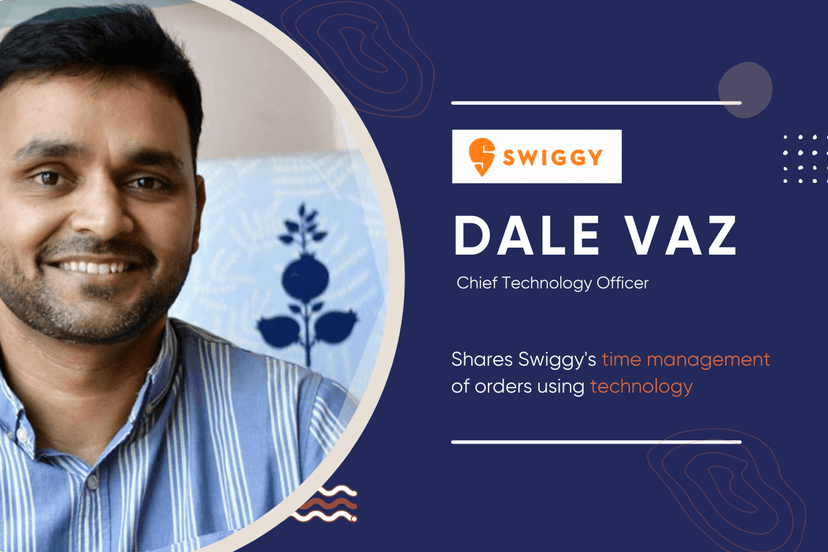
<h2><b>Dale Shares</b><p> I think time management is one of the places we have invested a lot in technology and AI over the last two years. What happens is when orders come in, you have a fixed number of orders but you also have a finite number of drivers so the real challenge is how do you decide which driver should be fulfilling which order. At a point there could be one order coming in for food, the other order is for Swiggy stores and yet another one for Swiggy go, so the problem space is basically what we call an assignment problem, where you have to assign a certain amount of work to a certain number of resources and you have to do it in the way in which you optimize on constraints. These constraints could be one, that you have to deliver the order within the time customer was promised, two, you also have to find the most cost-effective way of delivering and three, you also have to figure out whether there are certain rules by which you cannot assign a particular order; for example, I don’t want to assign somebody sitting in Kormangala an order that’s in Malleshwaram, because the driver has to travel across the city. So, you are also figuring out different constraints that go into an assignment. You get reduced to this basic problem which is essentially a mathematical one that states if I have a set of resources and I have a set of orders what is that unique combination that will optimize this set. We have built this technology which is a combination of AI-based models and optimization research (OR) based on math functions that run algorithms every two minutes in any given zone, it looks at all the orders that have come in, looks at all the drivers that are available and then start to predict which driver will become free in the next few minutes and which driver is actually available to take up a new order. Based on these predictions it will then match the set of items to the drivers, it will also include things like the driver’s skill, is a particular driver capable of delivering a package or Swiggy package pickup, and so on. All of this is happening at the moment as we speak, that's the secret sauce. That algorithm is running and making sure that across India millions of orders are being fulfilled and customers are getting their dishes and products on time. When it comes to voice texts, we believe long-term customers will move away from typing to interact with the devices in a more natural way just like we are speaking right now at some point in the future. Maybe in the coming times, there will be a virtual bot running this podcast and a virtual me answering; as long as we program the bots with questions and answers we don’t need to physically be present. I personally feel that technology will at some point fade away into the background and you will interact with the devices without really understanding its technology. Today, you take out your phone off your pocket and you physically have to type on it with your fingers which is natural, but if you see a kid using technology especially when I look at my kids, my daughter when she was 4 years old she was able to speak to Alexa and just commanded her to do stuff. For her, that was very natural versus having to go find a character on the screen and they type on it even though she knows how to read and write she just finds it difficult to go find letters and match them. But if given a complex situation, she will be able to do it better with Alexa. So, I think yes, the future is going to be about interactions like voice, maybe touch or maybe even physical presence, for example as you walk into the room the system detects you and the lights dim, the temperature sets to a certain value; in that world, you can imagine food delivery and convenience also being redefined. For example, you could be in a world wherein when you wake up Alexa will ask you, “you want me to reorder your food, your favourite breakfast from Swiggy?” You may say yes and then you go for a bath and then you come out from the shower, your food is ready, and it’s delivered via Swiggy. We do want to get into this place where we can understand voice. The challenge with India is that there are different levels of dialect and huge language differences, so from that perspective, it is a very hard and unsolved problem at the moment. We have begun a very early stage pilot within Swiggy trying out to understand voice calls that customers are making into our customer services and as we build that capability over time maybe we will get more sophisticated features like voice ordering. </p><h3><strong>Authored by Pratheek. V</strong></h3><p> For more information, please reach out to the <a href="Marketing@purplequarter.com">Marketing Team.</a> To find out more, watch the entire podcast here: https://youtu.be/_kEGV8WunmA</p></h2>
Read More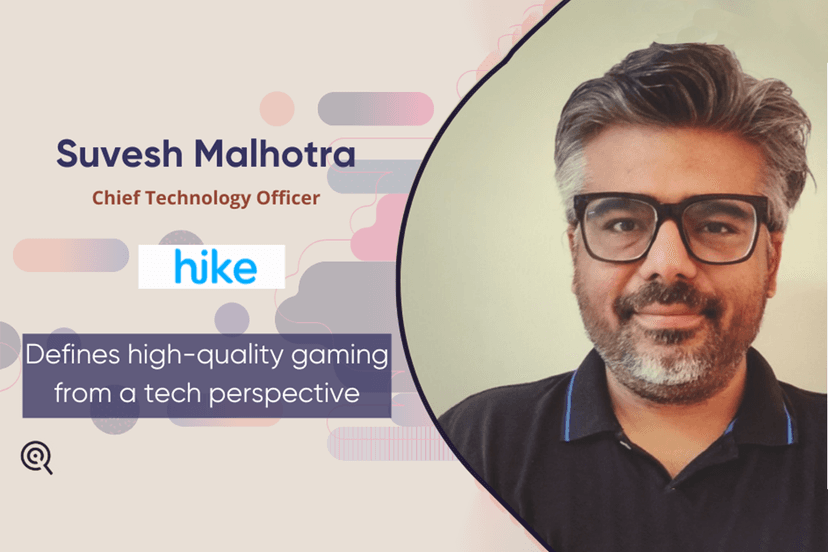
<h3><b>Suvesh says:</b><p> There are different dimensions of a high-quality gaming experience, one would be high-quality animation, what matters is the animation is smooth or not in the front end. It is very frustrating if you are pressing the button on the app, or the game in the context, and the game doesn't react automatically. In today's world, people expect things to happen immediately, it's not like the early 2000s. Another aspect of high quality is that if I take a certain action and the action does happen, that is the stability of it. So the first one is, it should happen immediately, and the second, it should happen, and the third too, let us say, if I had gameplay and I won, the money should get credited to my account. If I tried entering the game, was I able to enter the game or not, did the money get deducted and did I lose the money because there was some network fluctuation, all of these are packaged in high-quality art, high-quality design. That sort of improves the experience of playing the game. Those are the several aspects of quality and other variables that make or break. For example, can your system manage the scale if we had a 10x increase in concurring users, which does happen. There are times we suddenly see 10x spikes, can the system handle it gracefully, automatically scale to handle those concurrent users, those are the other variables. The whole point is that if we have to solve it, we have to solve it in an automatic fashion as can. So if you’re still relying on manual scaling up, it's not going to work. Obviously, scaling mechanisms are there, we have posted on Google cloud and use scaling mechanisms that automatically kicks in and scale up. We are also working on predictive scaling so that we can even start scaling up before the traffic scaling actually happens. For the gameplay quality; obviously, they do a lot of testing in every game to ensure is it high-quality because games are very complex stake machines. Apps have certain sets of complexity, but in gameplay, the inputs are so variable and the combination is so high that testing out a game is extremely hard, so we spend a lot of time testing it out and we have variables to standardize it to different format of a game. Now, we are not just testing, we have automated a lot of those standardized testing mechanisms so that it can be easy to test on an ongoing basis. The choice of technology framework, for example, we do all games of unity or native, so the animation rate is extremely high. If you use another tech like HTML files etc. that might be faster to build, but it cannot animate at a high pace. So, the choice of the technology stack, and on the backend, we started with the gaming engine, now we are building our own gaming stack at the backend; so that we can find a two-way communication with the user and the app. For example, if the user goes out of the context of the game, the two-way communication can break, but we are thinking of how even if the user goes out of the context, maybe there is a backed-up two-way communication channel so that we will get the user back to the context of the game even if there is a network fluctuation. So how can we build a high-quality backend stack to build a high-quality game? A lot of machine learning as well goes into play, for example, the network fluctuations automatically do a refund, if the money was deducted. There are times when customers are unhappy about something and can we respond back to the customers in less than a minute, that is something that we haven't solved yet, but in our mind in terms of solving it and machine learning will solve a lot of these problems, so that immediately we can solve the problem and we don’t lose the trust of our customer. All of these layers, starting from front end to backend to machine learning, contributes to building a high-quality experience. High-quality is not the game that you see, it is a lot more beyond that. </p><h3><strong>Authored by Pratheek. V</strong></h3><p> For more information, please reach out to the <a href="Marketing@purplequarter.com">Marketing Team.</a> Watch Suvesh's full session: https://youtu.be/EXpMyIje-wA</p></h3>
Read More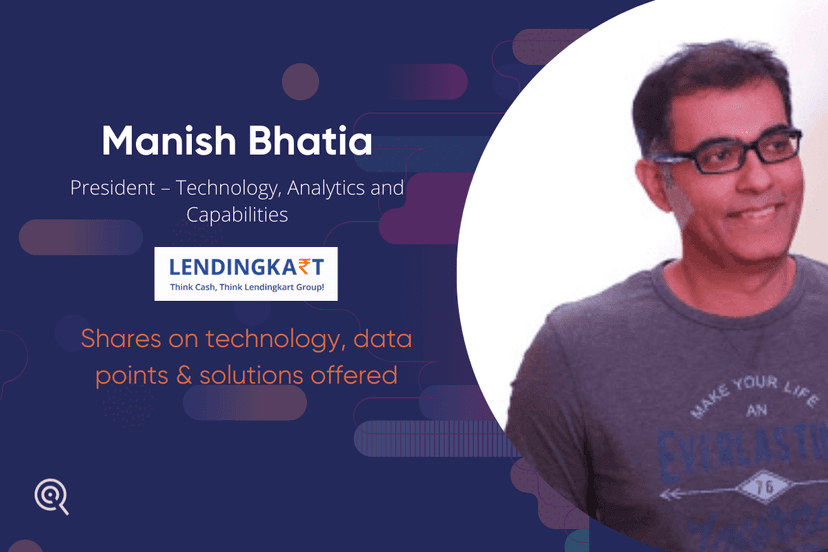
<h2><b>Solutions through Tech</b><p> Manish Shares: Looking at Lendingkart’s journey for the past 5 years, it has grown multi-fold and, overall, we have a great product-market fit, so there is a huge demand. Lendingkart figured out how to lend to customers and MSMEs and which other banks would not. We have been profitable and very close to being profitable now. The deal that we thought about is how to extend the reach that we have already created. Lendingkart is already digital, but we facilitated the business being digital and technology-driven. My question was, how do I create where we are right now and bring in the technology, learning with my background and it penetrates the MSME landscape and going deeply detailed about which MSME and what tenure we should give it to them. What is a risk profile? How do we extend that role? How much should we extend? What are the different data points we should look at? We have no details present, but we can lend to more than thirteen hundred cities. Every single city, ranging from small to micro has been covered. Now, how do we make sure that our customers get even more or how do they come back to Lendingkart for all their financial needs? So, we draw this journey forward and we only focus on MSME, where I think the overall thought process is an inch wide and a mile deep. There is so much to learn and understand in that space. How do I bring technology, data, and product to this and extend that reach into all these different areas is the thought process? </p><h2><b>Outdated tech in lending institutions </b></h2><p> Manish shares: Lendingkart is a complete digital platform and what we have been able to do is reach out to remote areas of India. The customers are creditworthy to be able to provide them with the facility. Most banks and NBFCs are retail-focused, so they lend around the area they have to increase the money market. Now, I think everybody sees the advantages of lending over there. So this platform is built to say we have X number of X million people coming in every month to search for loans in which, some we can serve, some we can’t. How are we sure that we can use the IP that we have created related to scoring? The IP that we have created in extending the reach? The IP that we have created involves engaging the customer through the funnel, where basically everything sort of the customer executes through digitally and how do we extend the IP on the platform to NBFCs or banks, who want to be a part of lending to these MSMEs. Now, we have multiple flavors with those platforms. One is completely API-driven, so the bigger banks connect with their system and the transition can happen. The decision can happen and the entire loan can be served to this, the API-driven model. The other is what we have created is the dashboard; the banks and NBFCs who are not so technology savvy, could use our complete platform or use our portal as their window into what is happening, they could comment, look at the product, approve it, raise the problems, or question on those things. They don’t need to have technology as a part of this ecosystem. The benefits for the banks are they have a target around the quality of loan they want. The segment they distribute the loans to and NBFCs and MSMEs is a big part they wanted to, but they cannot penetrate that part. This is an interesting avenue for them to say, they could be a part of the ecosystem. The customers are already coming on and looking for loans and relying on the IP that we have created on decisions. We could give them a range of NPIs and also a range on what to look at. They can build a business model around how to price this product and restructure it. That is the benefit, for the end customer which is the MSME, they want the best deal. We are trying to figure out how do we marry Lendingkart financially, being one of the NBFCs, or how do we marry all of these different banks. </p><h3><strong>Authored by Pratheek. V</strong></h3><p> To find out more, watch the entire podcast here: https://youtu.be/2dWGQN4UIYo</p></h2>
Read More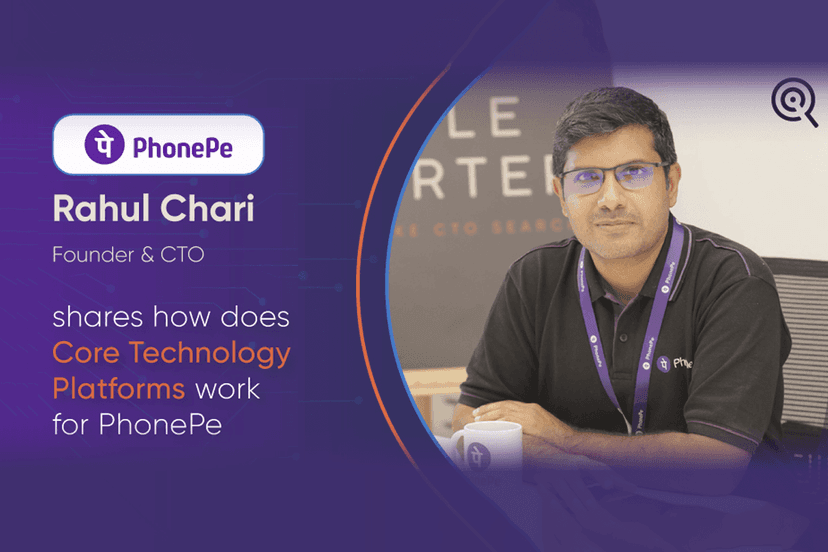
<h2><b>How do Core Technology Platforms work for PhonePe?</b><h3><strong>Rahul Shares:</strong></h3><p> The approach that PhonePe has taken is not typically what most startups did, at least 5 years back. There is a value in that, and it is not easy because it demands much more time and patience from the company as a whole. But we, as a team, myself, and the engineers who have joined very early, own and run the technology platform at PhonePe. We are clear about having a blueprint that separates our core platform from the business verticals or the technology layers built on top of it to deliver for the business. To name a few, there is a core payment platform; there is an accounting platform, there is a growth platform, and there is a risk and fraud retention platform. These are the core platform; most of our business verticals are built on top of this. The approach that we have taken is a clear set of principles that we operate with on each of these. For example, we follow a clear shared-nothing architecture, where we don't allow common databases to exist across the company, where you are overloading it with all the data; a design part that is followed mainly because it tends to be the easier path to take and its tends to have a certain level of short-term optimization where all the data is available in a consolidated manner for any of the microservices to fetch and deliver. Similarly, we have a principle around non-caching; we don't create mega caches; it's always a gain to have a mega cache just behind your edge layer so that you can deliver most of the data that is pseudo-static quickly to your app or your website. It is a design pattern that has short-term gains but creates long-term problems, whether it's about the staleness of the data or whether it's about having integrity failure when it comes to the data itself because of staleness. Today, each of these is an ecosystem by itself; we scale them independently because you realise that your workloads are different as we grow. A workload on your growth cluster could be very different from your workload on the payment cluster than on your account cluster. We can manage a clear allocation strategy when it comes to hardware; we can focus on the performance and scalability of these systems individually because they are not intertwined, they are core ecosystems, and we can improve them at their own pace. We are able to think about externalising some of these services and create almost all revenue tracks out of technology. Now, if you have to follow a design pattern that was significantly intertwined or was almost monolithic irrespective of whether you are a microservice or architecture or not, you could be monolithic as the technology stack in a company, and then you are never able to imagine possibly creating a business line out of the technology. It is not about AWS, but each of these services by themselves has a vast IP that we could externalise. We are now imagining our world in that direction as a technology group, not as a company; just as a technology group, we can create revenue lines. I think it has already paid us massive dividends. The other thing that has helped us go down this path is a very clear demarcation in the company about demands on the core platforms vs demands on the business verticals. Everybody takes a long view of the demands on the core platforms; even if they are compliant about it within the company that it takes a long time to develop new capabilities in payments or risk and fraud or growth. They also realise that they can extract significantly higher value when they get built. So even if it takes six months to build a new core capability in payments, they know for a fact that the next year or a year and a half, they have the opportunity to milk that capability. So they have developed patience in terms of not being top-down with dates. Unless it’s a compliance or a regulatory requirement, we try not to impose top-down dates on our core platforms. On the business vertical itself, you make a growth hike; that is what it does because this model forces product managers, businesses and engineers to try and create more value out of the features that have been developed versus gravitating towards the next shiny object. Culturally, we have designed ourselves to operate in this model, so it is a combination of the tech principles as well as the model of operation that delivers the results. </p><h3><strong>Authored by Pratheek. V</strong></h3><p> To find out more, watch the entire podcast here: https://youtu.be/Wbg_MQgj4Do</p></h2>
Read More